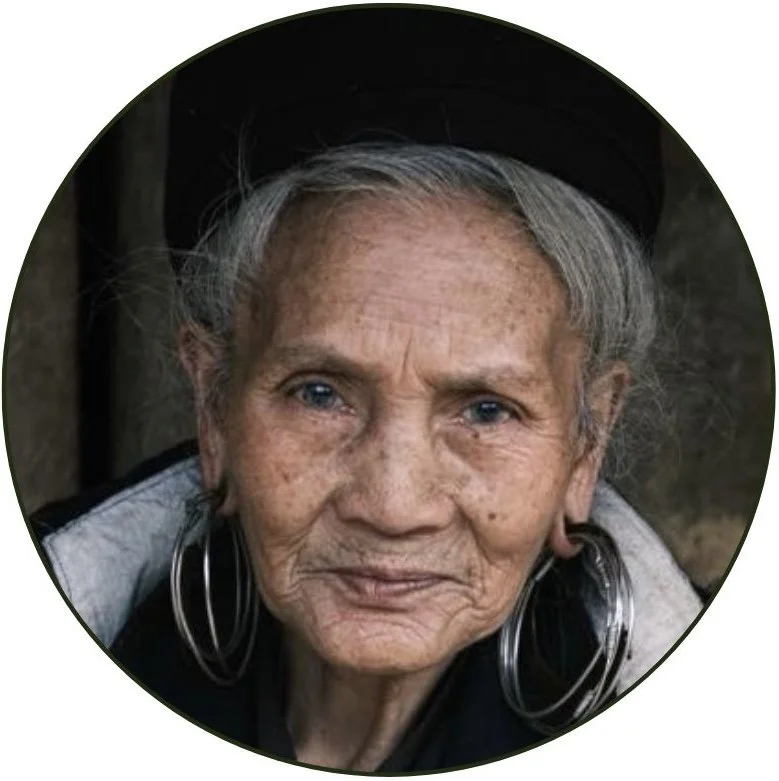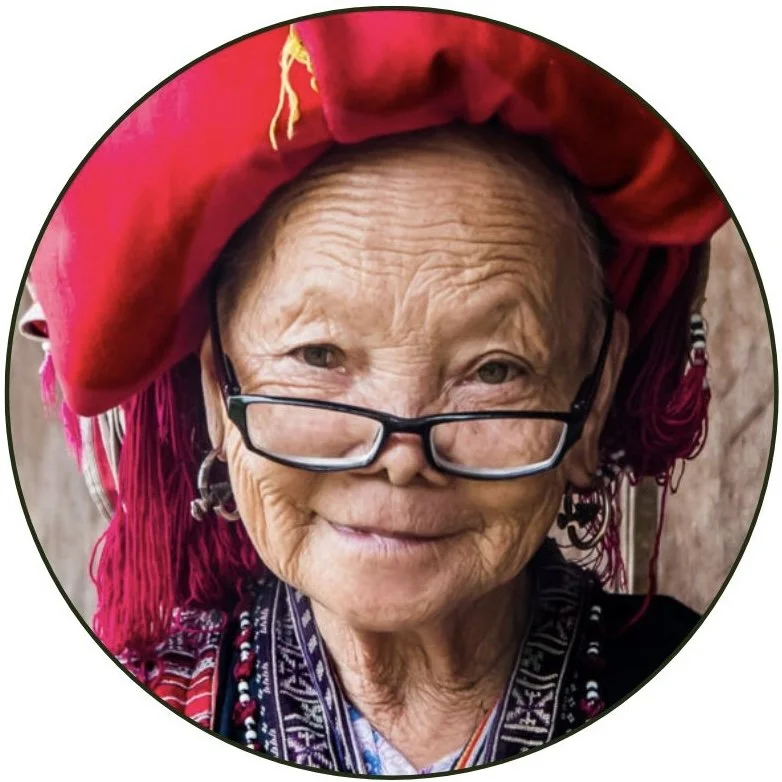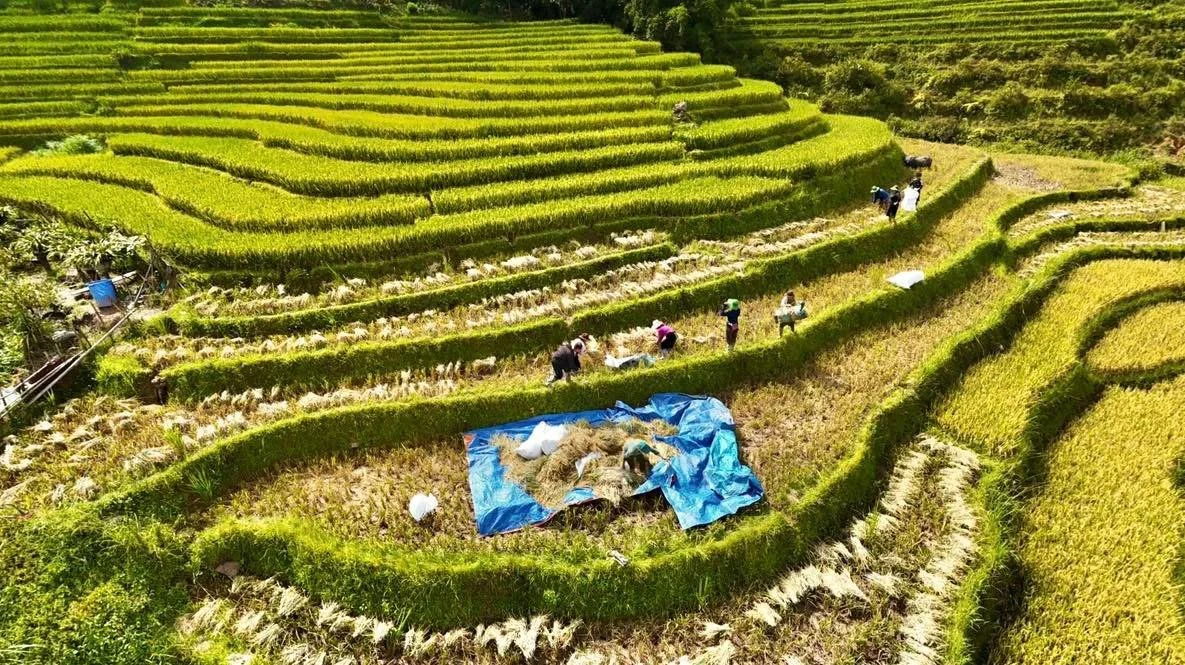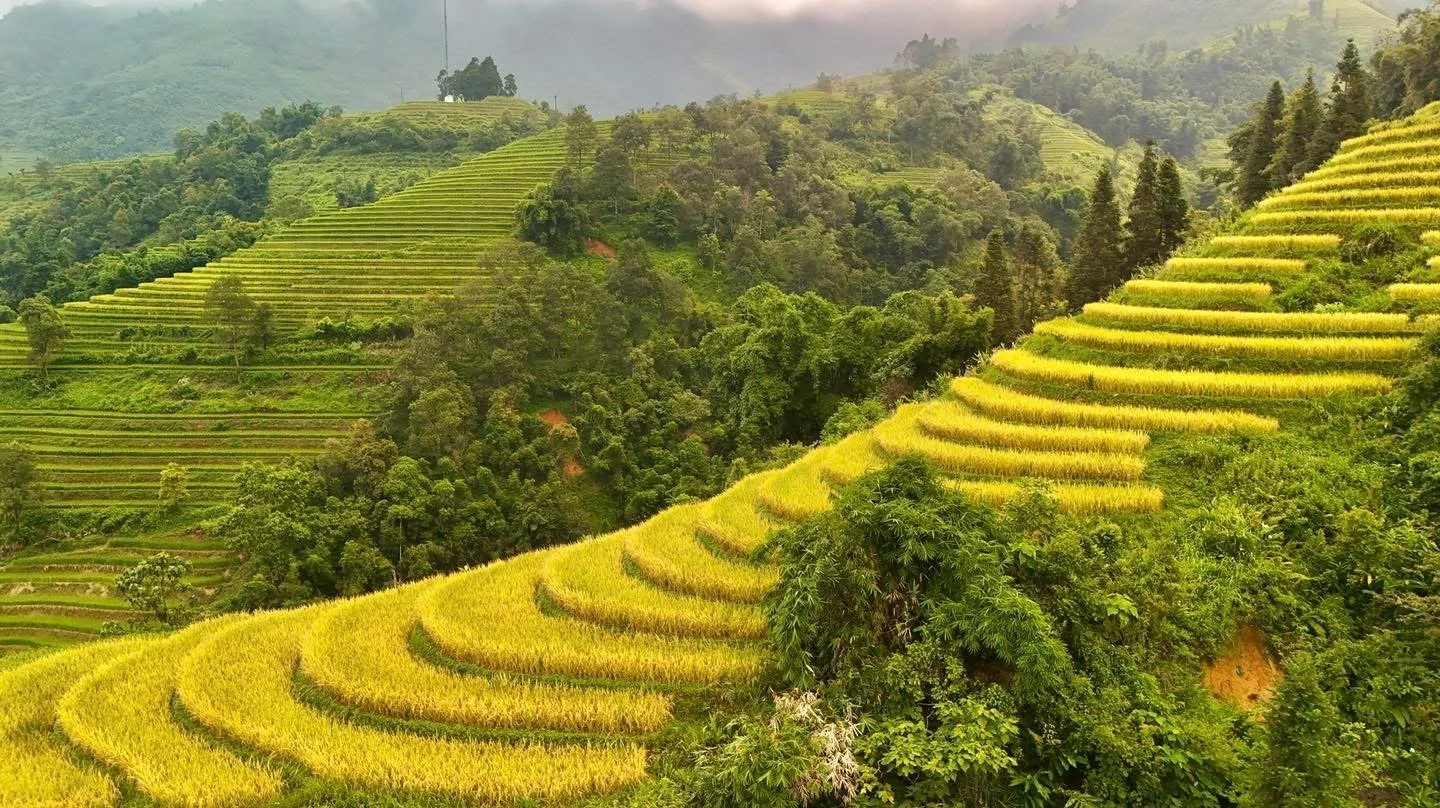Insights and Stories from Sapa and the Northern Borderbelt provinces of Vietnam.
The Wisdom Keepers of ETHOS
The elders of Sapa hold stories that reach far beyond the trekking trails. Their knowledge shapes how we travel, learn and connect in the mountains.
When people ask what makes ETHOS different, we might talk about routes, homestays and workshops, yet the real answer sits deeper. Many of our experiences begin not with a map, but with a slow conversation beside a kitchen fire, shared with someone who has lived through almost a century of change in the highlands.
We call them our ETHOS elders. They are Hmong, Dao and neighbours from other ethnic groups, aged between 76 and 99. Some move slowly now, some stay close to home, yet their experience shapes almost everything we do.
Before Roads, Hotels and Tour Buses
A Valley With No Engines
If you stand on a ridge at dawn, watching the terraces shift from dark blue to gold, it is tempting to imagine that things have always looked this way. Our elders remind us that they have not. There were no cars in Sapa, no electricity humming through homes, no backpackers comparing trekking apps.
The houses were smaller and darker, lit only by torches or tiny oil lamps. Families grew almost everything themselves. Maize drying above the fire, a plot of rice clinging to a steep bank, simple greens plucked from the forest edge. Children learned not through textbooks, but through listening to stories told softly in Hmong or Dao.
Life was not easy, yet it felt anchored. Days followed farming rhythms. Nights followed the gentle hush of wind, rather than an electric buzz. The elders speak of it plainly, without romanticising or criticising, simply as a memory that still tastes real.
Living Through Change
Hunger, Conflict and Shifting Rules
Most elders have lived through events that younger people only study from a distance. Wars that moved through the border region. Long hungry months when harvests failed. New governments arriving with new expectations for how people should speak, dress and behave.
Some hid in forests during bombardments. Others sold heirloom silver jewellery to buy rice. Families relocated when valleys flooded or when land rights changed. They endured loss, uncertainty and constant adaptation, yet held on to language, ritual and textile knowledge with astonishing strength.
Their stories do not follow perfect timelines. One memory drifts into another. A tale about tending buffalo wanders into a reflection about how the forest once sounded thicker and more alive. History here behaves like fabric; it folds, layers and overlaps.
How Elders Shape Our Work
Guidance Beside the Fire
Before finalising any new route or community activity, we visit elders for advice. Sometimes we sit in courtyards surrounded by maize, other times in smoky kitchens where pots simmer quietly. There is usually tea and sometimes gentle teasing or blunt honesty.
An elder might explain that a beautiful waterfall should not be photographed in certain months, or that a particular forest is part of a clan’s spiritual world, so paths must avoid it. Another might ask us to consider an old settlement that could tell an overlooked story.
Outsiders might see only dramatic scenery, yet elders see boundaries, spirits, ceremonial sites and memories that cannot be found on a map.
Learning Through Presence
The Fire Becomes a Classroom
The most meaningful moments for guests often arrive when the trekking boots are off and daylight fades. An elder may unroll hemp cloth to demonstrate batik, explaining each motif and its link to fertility, weather or clan identity. The room becomes a quiet circle of shared listening, where even relatives pause to learn again.
Sometimes someone sings a courting song that no young person remembers. Other nights a shaman drum is brought out, its symbols fading yet still powerful. Silver jewellery is explained piece by piece, each item tied to marriage, birth or migration.
These are not staged performances. They are real exchanges that happen because trust exists and because elders have chosen to share knowledge that might otherwise fade.
Bridging Generations
Young Guides and Old Knowledge
Many of our guides are in their twenties or thirties. They speak multiple languages, use smartphones and connect with travellers easily. Elders watch this with pride and mild worry. They want progress, yet they fear the loss of language, motifs and ritual.
By inviting travellers to learn, elders see proof that their heritage still matters. After a storytelling session, an elder who began shy may end the evening animated and eager to share more next time. It becomes a small but powerful exchange between generations.
Ethics In Practice
Accountability Rooted in Respect
Elders help us stay grounded. They tell us when a trail must close or when a village needs rest from visitors. We follow their lead even when it disrupts plans, because ethical travel is not a slogan for us. It is a relationship that must remain alive, honest and humble.
Without elders, ETHOS would still exist, but the depth would be gone. We might still trek these mountains, but we would not understand their stories or their silences.
Final Thought
Community elders share history and remind us that culture is a living current, not an archive. It slows, bends and sometimes disappears, yet with attention it can keep flowing.
We walk with them not to preserve the past perfectly, but to let it breathe into the present, step by slow step, fire by fire, voice by voice.
Join our Team
If you would like your journey to be shaped by lived wisdom rather than standard itineraries, reach out and begin a conversation with our team. We will help you travel with intention, curiosity and respect.
The Rice Harvest in Sapa: Tradition and Community
In Sapa, the rice harvest is more than work. Families gather, traditions are honoured, and communities move together with the rhythm of the terraces.
The Rhythm of the Terraces
Every year in Sapa, the rhythm of life follows the rice terraces. The harvest is a seasonal anchor for Hmong and Dao families, shaping both work and tradition.
When the Harvest Begins
In the lower valleys, cutting starts as early as August, while the higher terraces wait until September. Altitude and weather shift the calendar, but the pattern remains the same: early mornings, hands on sickles, and sheaves carried to dry in the sun.
Ceremony and Meaning
The harvest is not only practical but also ceremonial.
Offering the First Rice
A small portion of the first grains is always set aside for the ancestors and for the spirits of field and water. At the household altar, incense is lit and quiet words are spoken in thanks. These simple rituals bind the community to the land and to generations past.
Working Together
Labour is shared within and between families, keeping old traditions alive.
The Circle of Support
Neighbours and relatives trade days, helping each other through the long hours in the fields. Threshing is often done with simple wooden frames, the rhythm steady and slow. Machines sometimes appear, but on the steep terraces handwork still rules.
A Living Landscape
For visitors, the harvest is a time when the terraces are alive with colour and movement.
Beauty and Survival
Golden fields ripple in the wind as farmers work side by side, their voices carrying across the valleys. What may look like ordinary labour is in fact the heart of the year, deciding food, family, and community.

















